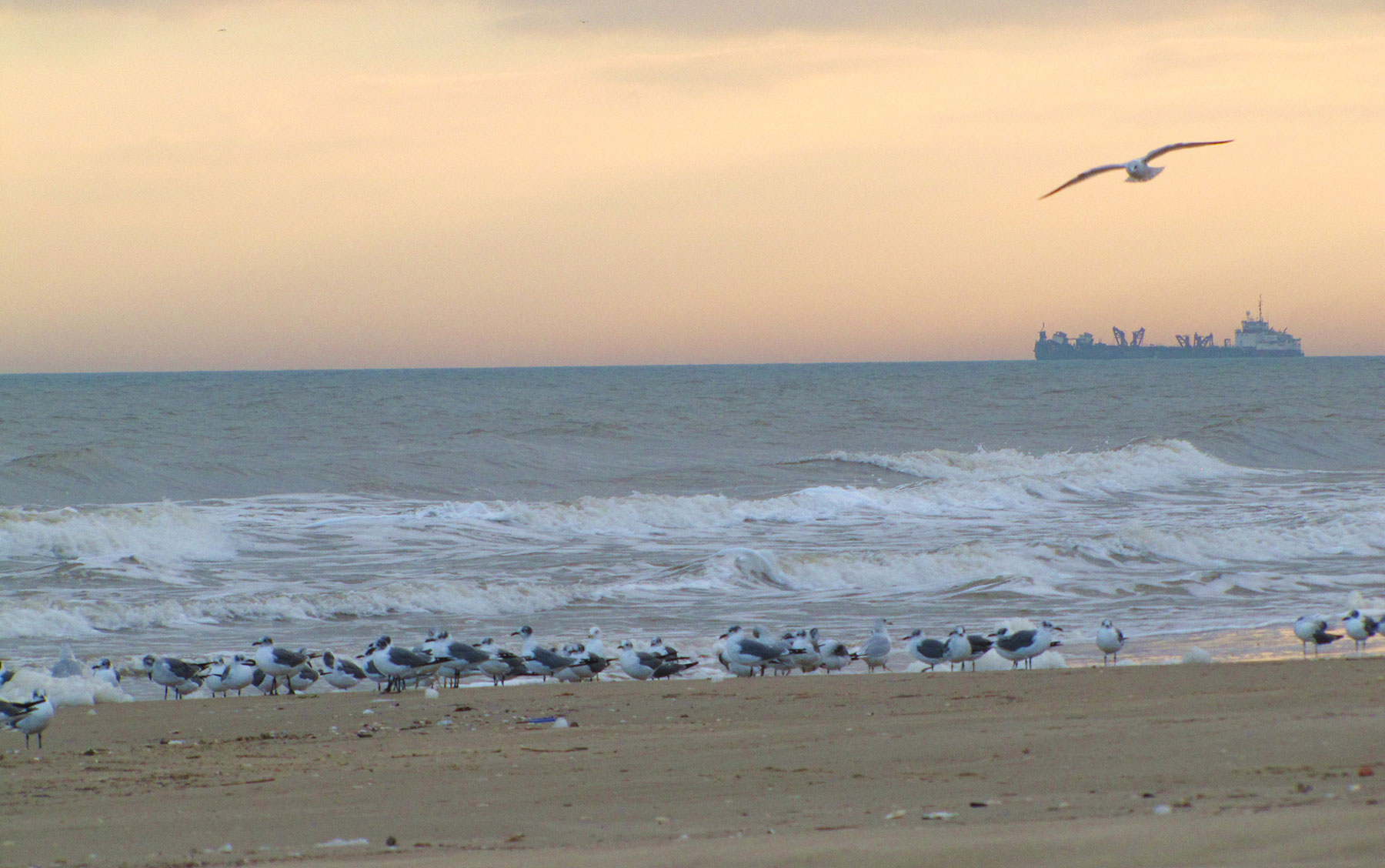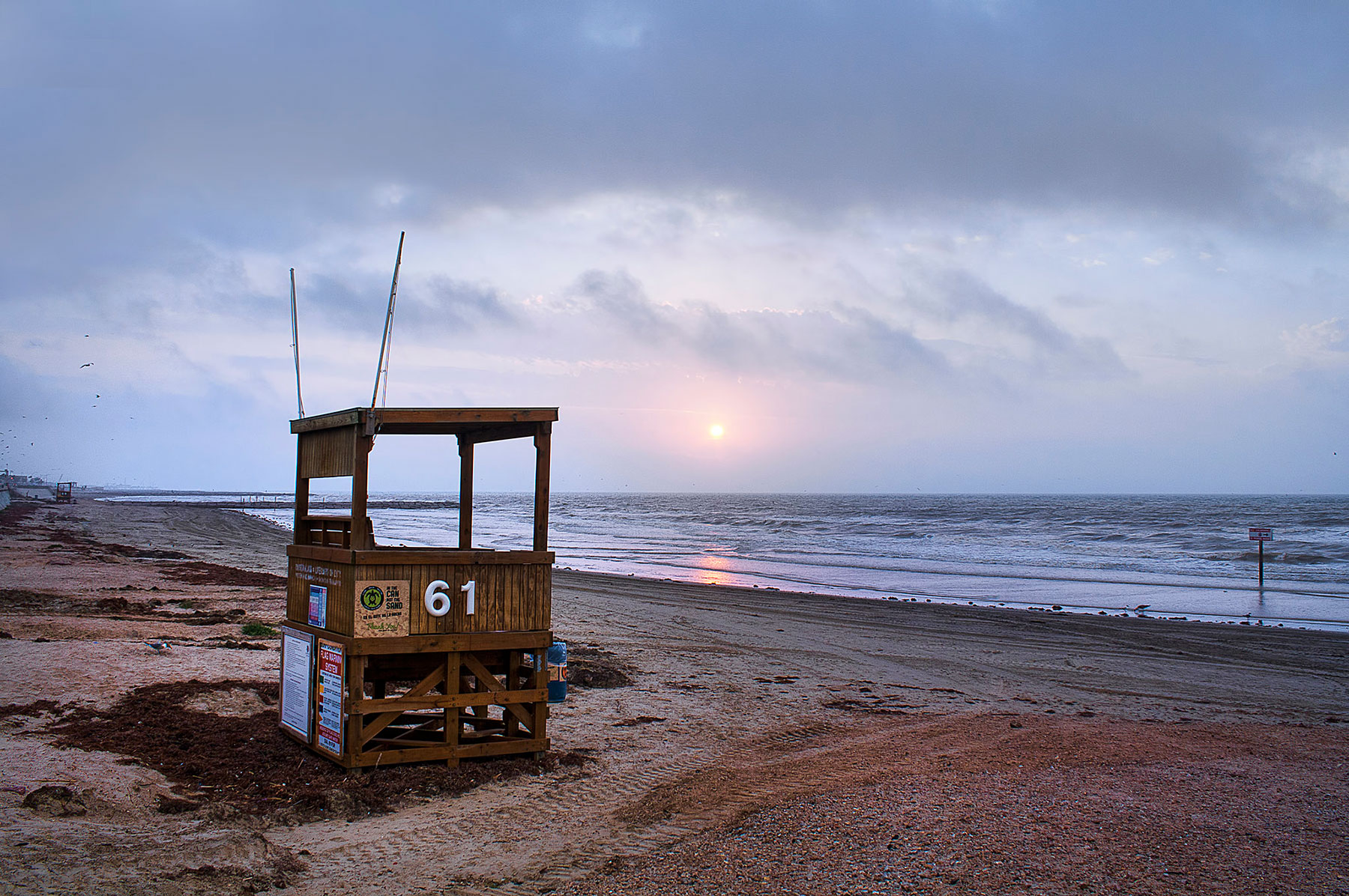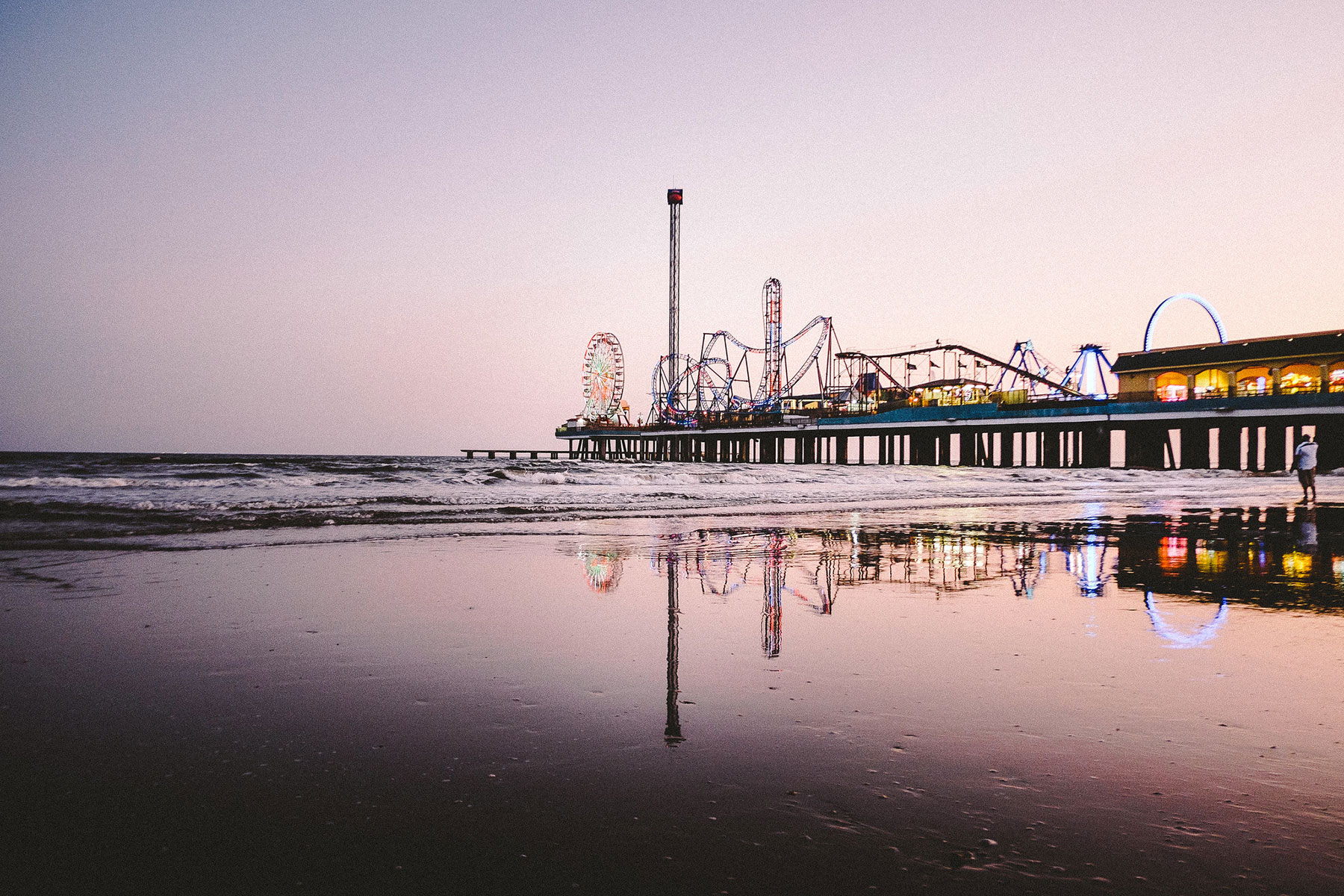Planning an exciting family trip to one of the popular Texas beaches? Well, you better hold off for a few moments and go through the list we've assembled here for you! Since the warm Gulf waters are a perfect environment for the growth of harmful viruses and bacteria, some of the most popular beaches turned out to be some of the most dangerous ones too!
Our research is based on the reports retrieved from water quality monitoring services such as Swim Guide and Texas Beach Watch, as well as additional analysis of various Texas beach reviews, posted online.
Texas Beach Watch monitors Texas' recreational beaches for Enterococcus bacteria, sometimes called fecal matter. Water samples are collected and analyzed on a weekly basis.
SwimGuide.org is a global initiative which monitors water quality on different beaches across the globe, based on regularly taken water samples.
We will grade each beach based on its Enterococcus bacteria (fecal bacteria) level, water quality score, and visitor review impressions.
Fecal Bacteria? Is it dangerous?
Although fecal bacteria can be found almost everywhere, large amounts of it do cause harm to our health:
Large quantities of fecal coliform bacteria in water are not harmful according to some authorities, but may indicate a higher risk of pathogens being present in the water. Some waterborne pathogenic diseases that may coincide with fecal coliform contamination include ear infections, dysentery, typhoid fever, viral and bacterial gastroenteritis, and hepatitis A. (Wikipedia)
Yuck! But doesn't the government has to issue an official warning and close the potentially dangerous beach?
Yes, and that does happen! However, due to different beaurocratic procedures, this can take quite a while, and unless the consequences are considered catastrophic, weeks may pass before the beach is actually closed. So it's not going to hurt to check the status of the beach yourself before visiting! The opposite, in fact!
Get to know which Texas beaches are the most polluted ones, avoid them and enjoy your holiday time at safe and beautiful places instead!
Surfside Beach
Risk level: Extreme Source: Beachwatch TX 77541, USA (Show on Google Maps)

Photo by Poor Ole Rich
Surfside Beach is a popular place situated north off the Freeport Harbor Channel jetties. The beautiful sandy beach stretches for several miles along the Gulf of Mexico and boasts rich wildlife. If you are lucky enough you can even see dolphins jumping out of the water.
However, because Texas Beach Watch has revealed that enterococcus (fecal) bacteria counts here are greater than 104cfu/100ml (last update: July 9th, 2019), visitors are highly advised not to enter the Gulf waters here.
People who have visited the beach also doubt that it is an appropriate place for swimming:
Surfside beach in general is pretty run down. And oh yeah, there wasn’t any beach area - just rocks that would break an ankle if you tried to venture past them to the water
Jetty Park Beach
Risk level: Extreme Source: Beachwatch Matagorda, TX 77457, USA (Show on Google Maps)

Photo by Terry Ross
Jetty Park features a long and narrow sandy beach starting from the point where the Colorado River flows into the Gulf of Mexico. This is a fine recreation area where families with children and groups of young people love to spend their free time on warm days.
Texas Beach Watch reports that enterococcus (fecal) bacteria counts near the Jetty Park are greater than 104cfu/100ml (last update: July 9th, 2019). Health risks are so high that it is advisable to avoid swimming in this area, especially for kids of all ages. If you are coming here anyway, make sure to choose beach activities that require no contact with the waters.
Those who have visited this place also disliked the swimming conditions offered by the Jetty Park Beach:
We saw a lot of jellyfish on the shore, so probably it’s not a great place to play in water. The signs prohibit swimming here.
This is NOT a swimming beach!
Quintana Beach County Park
Risk level: Extreme Source: Beachwatch 330 5th St, Quintana, TX 77541, USA (Show on Google Maps)
Quintana Beach County Park is located in Texas at the beautiful coast of the Gulf of Mexico, near the Freeport Harbour Channel and within just a 15 minutes drive from the city of Freeport. Many people from the neighboring areas come to the beach to sunbathe, to go fishing or just to admire the beauty of the ocean.
However, the beach is not as marvelous as it may seem from the first sight. According to the water research conducted by Texas Beach Watch, enterococcus (fecal) bacteria counts at Quintana Beach are greater than 104cfu/100ml (last update: July 7th, 2019). This means that swimming is not adivsable. Avoid getting into the waters, especially if you have taken children with you.
Visitors’ reviews also suggest that swimming at the Quintana Beach County Park is not safe, but for different reasons:
We most likely will not go back to this park, mainly because there are chemical plants on three sides
Palacios Pavilion Beach
Risk level: Extreme Sources: Beachwatch, Swimguide 693 S Bay Blvd, Palacios, TX 77465, USA (Show on Google Maps)
Palacios Pavilion Beach is a remarkable spot at the Tres Palacios Bay in Texas. The beach is rather long and narrow and it features two short rocky jetties and two longer ones serving as breakwaters. Locals love to spend their free time fishing here.
According to Texas Beach Watch, enterococcus (fecal) bacteria counts in the bay are greater than 104cfu/100ml (last update: July 9th, 2019).
Swim Guide also disapproves of swimming in this area since the water both at the eastern and western part of the beach failed to meet water quality standards (last update: July 13th, 2019). Take care of your health and choose other beaches for swimming until the bacteria counts get reduced.
Locals also report that the beach is not clean enough. In fact, the reviews sounds horryfying :
Wish they would pick up the dead fish and fish skeletons
I got sand fleas on my arms there!!! They embed themselves under your skin!
Cole Park Beach
Risk level: High Source: Swimguide Corpus Christi, TX 78404, USA (Show on Google Maps)
Cole Park Beach located in Corpus Christi features many recreational facilities and is a beloved destination for tourists as well as locals. The park offers the opportunity of watching films and concerts in an outdoor amphitheater when the weather is fine.
Those who choose to go to this park during hot summer days should bear in mind that according to the analysis conducted by SwimGuide.org, the waters near the beach met water quality standards less than 60% of the time (last update: July 5th, 2019).
The reviews of the locals also contain information about dirty water:
The only thing that I don't like is the color of the water
The grass was high, I had to look over the tall grass. To see the dirty water. But the hazardous water signs were very visible
Texas City Dike Beach
Risk level: High Sources: Beachwatch, Swimguide Dike Rd, Texas City, TX 77590, USA (Show on Google Maps)
Texas City Dike is a man-made water breaker reaching our from the mainland towards the channel between the Goat Island and Galveston. The place is famous for its mile-long beach which is a beloved place of rest among many Americans.
However, swimming at the Texas City Dike Beach may be dangerous for your health. Two services engaged in checking water quality disapprove of swimming in this area. Texas Beach Watch is warning that enterococcus (fecal) bacteria counts here are between 35 and 104cfu/100ml (last update: July 4th, 2019). At the same time, SwimGuide states that the water at the Texas City Dike Beach passed water quality tests 60-95% of the time (last update: July 5th, 2019). Bear in mind that the Dike is not an approved swimming spot.
Visitors suggest choosing another place for bathing though they find other ways of beach entertainment all right:
Great spots for water sports, bad beach
A weird shrimp smell.
Rollover Pass Beach
Risk level: High Gilchrist, TX 77617, USA (Show on Google Maps) Source: Beachwatch
The Rollover Pass is an artificially made strait joining the Gulf of Mexico and the Galveston Bay. East and west from the place where the Pass meets the Gulf there are two parts of a sandy beach.
The place is rather polluted. Texas Beach Watch has revealed that enterococcus (fecal) bacteria counts at both sides of the Rollover Pass are between 35 and 104cfu/100ml (last update: July 9th, 2019). This place is good for birdwatching and fishing but not so much for swimming.
Locals have also named other reasons why this beach should be avoided:
It's okay to catch fish but broken glass everywhere so not safe for kids
Dirty porta cans
Sea Rim State Park Beach
Risk level: Medium Source: Beachwatch 19335 State Hwy 87, Sabine Pass, TX 77655, USA (Show on Google Maps)
Sea Rim State Park is famous for its rich wildlife. This is where you can encounter different animal species including alligators. Birdwatchers also love this place because many migratory birds pass through the park at different times of the year.
Swimming at the park beach is not advisable because enterococcus (fecal) bacteria counts in the water are between 35 and 104cfu/100ml (last update: July 8th, 2019), as stated by Texas Beach Watch.
The park visitors also disliked garbage on the beach:
So sad to see so much garbage on the beach, also an incredible amount of mud on the beach
The beach was very littered with debris and after driving 2 extra hours to see it, I was bummed
Galveston Seawall Beach (53rd Street)
Risk level: Medium Source: Swimguide 53rd street, Seawall Boulevard, Galveston, TX 77551, USA (Show on Google Maps)

Photo by Katie Haugland Bowen
The Seawall Boulevard is a long narrow street stretching along the coast of the Galveston Island. Sandy beaches located along the Boulevard are generally referred to as Seawall beaches.
Galveston is notorious for its beaches being not very clean. It’s far from pleasant to see trash and empty cans lying on the sand. Moreover, the water near some Seawall beaches is also polluted. The research conducted by Texas Beach Watch has shown that enterococcus (fecal) bacteria counts at the beach near the 53rd street are between 35 and 104cfu/100ml (last update: July 10th, 2019), which makes swimming risky and unpleasant.
People who have visited the Seawall beach at the 53rd street mostly dislike the color of the water:
When we pulled up expecting to see a beautiful beach, the water was visibly brown and disgusting! We drove a long time to get to this beach and we were highly disappointed. We did not swim, we did not stay. Beach snobs beware!!
Pleasure Pier
Risk level: Medium Source: Beachwatch 2501 25th street, Seawall Blvd, Galveston, TX 77550, USA (Show on Google Maps)

Photo by Thomas Ohlsson Photography
The Pleasure Pier is a famous Galveston beach entertainment facility situated at the Seawall Boulevard near 25th street. West and east of the Pier there is a beach which is attractive for many locals as well as tourists.
If you decide to spend your weekend at the Pleasure Pier, beware that swimming in the water can do harm to your health. This especially concerns the part of the beach to the east of the Pier because the enterococcus (fecal) bacteria counts there are greater than 104cfu/100ml (last update: July 9th, 2019). Entertaining yourself on the pier is much safer than in the water below.
The place is very run down. Looks rusty and unclean
Except for these two, most other Seawall beaches, however, are considered to be safe for swimming. If you want to swim and not just sunbathe, you are better off going with another beach.
To conclude
Swim Guide and Texas Beach Watch collect and test water samples every week from May to September and every other week in all the remaining months of the year. Water quality is subject to change over time, this is why it is highly advisable to check the beach water status on one of these websites (or, even better, on both of them) before visiting.

